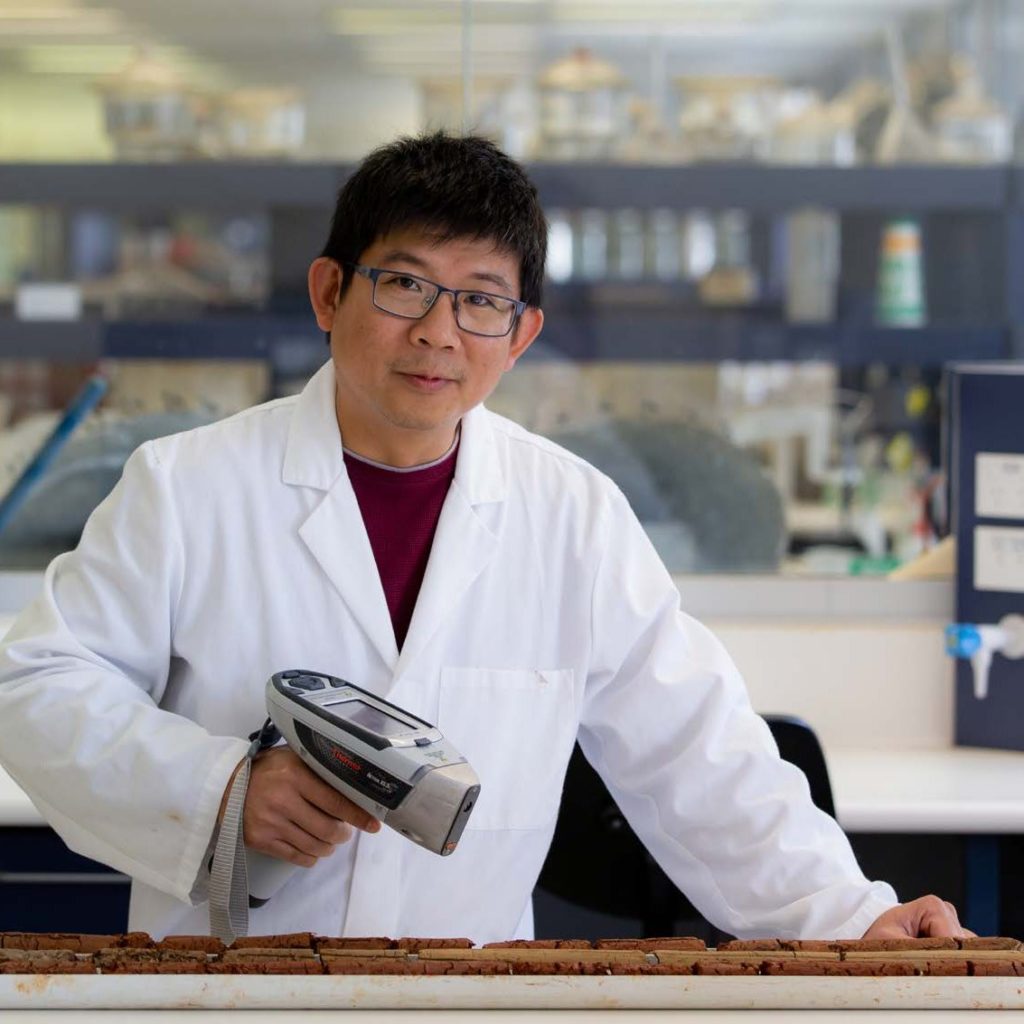Announcement Richard Webster Medal 2022
by R. Murray Lark, Chair of the Committee on Prizes and Awards (Pedometrics Commission).

The Pedometrics Committee on Prizes and Awards is pleased to announce the award of the Richard Webster Medal of the International Union of Soil Sciences (IUSS) to be awarded at the 22nd World Congress of Soil Science (WCSS) in Glasgow, Scotland, in August 2022. This medal recognizes the person who has most advanced pedometrics in the period between the IUSS WCSS of 2018 and 2022, while also considering achievements prior to that period.
The Medal is awarded to Professor Budiman Minasny, Professor of Soil – Landscape Modelling at the University of Sydney Australia.
Professor Minasny was nominated for this award by:
- Dr Alexandre Wadoux, University of Sydney
- Professor Alex McBratney, University of Sydney
- Professor Bhabani Das, Indian Institute of Technology
- Dr Leigh Winowiecki, CIFOR-ICRAF
- Professor Yong-Guan Zhu, Chinese Academy of Sciences
- Dr Jingyi Huang, University of Wisconsin-Madison
Professor Minasny has made distinguished contributions to soil science with a foundation in mathematics and statistics and with a focus on developing our understanding of the processes of soil formation in the landscape and applying this understanding to better prediction and management of soil conditions. He is an original thinker, developing new and distinctive ideas. He has developed an international network of collaborators, contributing to the improved management of the soil and fostering the careers of a new generation of scientists whose post-graduate research he has supervised.
Budiman’s contributions are perhaps best known in the field of Digital Soil Mapping, and his influence is clear in the GlobalSoilMap project. He has made other substantive contributions in soil physics, including the measurement of soil structure and processes of aggregation; in spectroscopic methods for soil science, and for quantifying soil carbon sequestration potential and auditing soil carbon stocks. His work on quantitative modelling of soil formation is an original and exciting contribution in which understanding of basic pedogenic processes is modelled to generate insight into the origins and development of soil variation at millenial timescales.
Budiman’s contribution as a teacher have been multifaceted. From his base in Sydney he has developed collaborations with institutions in North and South America, Europe and Asia. He has supervised 10 PhD students to completion, hosted overseas students and supervised the work of post-doctoral fellows as theme leader for Carbon, Soil and Water at the Sydney Institute of Agriculture.
Budiman has made many contributions to the life of the international Pedometrics community. He chaired the Pedometrics Commission and has contributed to the work of GlobalSoilMap, organizing the 2012 Digital Soil Mapping conference in Sydney. He contributes to the Global Soil Partnership and serves on the scientific committee of the Soil C 4 per mille group. He is a joint Editor in Chief of Geoderma.
Budiman’s scientific achievements thoroughly merit the award of the Richard Webster Medal, but this announcement would be incomplete if it overlooked the high personal regard in which he is held throughout the community for his quiet and unassuming but effective approach, his concern to support and develop younger scientists and his commitment to doing science which will make a difference to the global environment and to local communities whose life and well being depends on the soil.
It is hard to make a selection of Budiman’s publications to round off this announcement, so I have opted for a set which, for me, summarize the originality and breadth of his achievements.
- Minasny, B. and A.B. McBratney, A rudimentary mechanistic model for soil production and landscape development. Geoderma, 1999. 90(1-2): p. 3-21.
- McBratney, A.B., M.L. Mendonça Santos, and B. Minasny, On digital soil mapping. Geoderma, 2003. 117(1-2): p. 3-52.
- Minasny, B. and A.B. McBratney, Integral energy as a measure of soil-water availability. Plant and Soil, 2003. 249(2): p. 253-262.
- Odgers, N.P., A.B. McBratney, and B. Minasny, Generation of kth-order random toposequences. Computers and Geosciences, 2008. 34(5): p. 479-490.
- Minasny, B., B.P. Malone, A.B. McBratney, D.A. Angers, D. Arrouays, A. Chambers, V. Chaplot, Z.S. Chen, K. Cheng, B.S. Das, D.J. Field, A. Gimona, C.B. Hedley, S.Y. Hong, B. Mandal, B.P. Marchant, M. Martin, B.G. McConkey, V.L. Mulder, S. O’Rourke, A.C. Richer-de-Forges, I. Odeh, J. Padarian, K. Paustian, G. Pan, L. Poggio, I. Savin, V. Stolbovoy, U. Stockmann, Y. Sulaeman, C.C. Tsui, T.G. Vågen, B. van Wesemael, and L. Winowiecki, Soil carbon 4 per mille. Geoderma, 2017. 292: p. 59-86.
- Minasny, B. and A.B. McBratney, Limited effect of organic matter on soil available water capacity. European Journal of Soil Science, 2018. 69(1): p. 39-47.
- Minasny, B., D. Fiantis, B. Mulyanto, Y. Sulaeman, and W. Widyatmanti, Global soil science research collaboration in the 21st century: Time to end helicopter research. Geoderma, 2020. 373.
- Román Dobarco, M., A. McBratney, B. Minasny, and B. Malone, A modelling framework for pedogenon mapping. Geoderma, 2021. 393.
